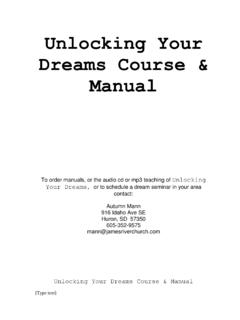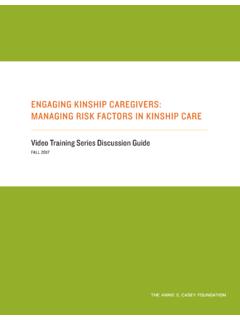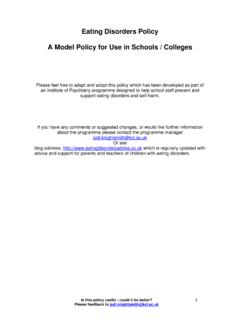Transcription of Section 9 Foreign Languages - mext.go.jp
1 Section 9 Foreign Languages I. OVERALL OBJECTIVE. To develop students' basic communication abilities such as listening, speaking, reading and writing, deepening their understanding of language and culture and fostering a positive attitude toward communication through Foreign Languages . II. OBJECTIVES AND CONTENTS FOR EACH language . English 1. Objectives (1) To enable students to understand the speaker's intentions when listening to English. (2) To enable students to talk about their own thoughts using English. (3) To accustom and familiarize students with reading English and to enable them to understand the writer's intentions when reading English. (4) To accustom and familiarize students with writing in English and to enable them to write about their own thoughts using English. 2. Contents (1) language Activities The following language activities should be conducted over the period of three years in order to develop a practical command of English which would allow students to understand English and express themselves in English.
2 A. Listening Instruction should be given mainly on the following items: (a) To follow the basic characteristics of English sounds such as stress, intonation and pauses and listen to English sounds correctly. (b) To listen to English, spoken or read in a natural tone, and accurately understand the information. (c) To listen to questions and requests and respond appropriately. (d) To understand the content, confirming what has been said by, for example, asking the speaker to repeat it. (e) To listen to coherent English and properly understand its outline or important points. B. Speaking Instruction should be given mainly on the following items: (a) To become familiar with the basic characteristics of English sounds such as 1. stress, intonation and pauses and pronounce English sounds correctly. (b) To speak accurately to the listener(s) about one's thoughts and feelings, or facts. (c) To carry on a dialogue or exchange views regarding what students have listened to or read.
3 (d) To speak continuously using various techniques such as linking words. (e) To give a simple speech on a provided theme. C. Reading Instruction should be given mainly on the following items: (a) To distinguish letters or symbols and read English correctly. (b) To read silently while thinking about the written content, and read aloud so that the meaning of the content is expressed. (c) To accurately understand the general outline of stories or the important parts of descriptive texts. (d) To understand the writer's intentions in texts such as messages and letters and respond appropriately. (e) To grasp the written content or the writer's viewpoints so as to be able to express one's impressions or state agreement/disagreement and reasons for it with regard to the content or viewpoints. D. Writing Instruction should be given mainly on the following items: (a) To distinguish letters or symbols and write correctly with due attention to the spaces between words. (b) To correctly write a sentence with due attention to the connections between words.
4 (c) To take notes or write one's impressions or statements of agreement/disagreement and reasons for it with regard to what students have listened to or read. (d) To write about one's thoughts and feelings with regard to issues like what has happened or what one has experienced in everyday situations. (e) To write a composition with due attention to the connections between sentences so as to accurately convey one's thoughts and feelings to the reader(s). (2) Treatment of the language Activities A. In instruction over the period of three school years, consideration should be given to the following points: 2. (a) Activities in which, for example, students actually use language to share their thoughts and feelings with each other should be carried out. At the same time, teachers should undertake activities for students to understand and practice the language elements indicated in (3). (b) In activities in which, for example, students actually use language to share their thoughts and feelings with each other, they should be able to perform language activities in which they have to think about how to express themselves in a way appropriate to a specific situation and condition.
5 (c) In conducting language activities, teachers should focus on the following language -use situations and functions of language . [Examples of language -use Situations]. a. Situations where fixed expressions are often used: Greetings Self-introductions Talking on the phone Shopping Asking and giving directions Traveling Having meals etc. b. Situations that are likely to occur in students' lives: Home life Learning and activities at school Local events etc. [Examples of Functions of language ]. a. Facilitating communication: Addressing Giving nods Asking for repetition Repeating etc. b. Expressing emotions: Expressing gratitude Complaining Praising Apologizing etc. c. Transmitting information: Explaining Reporting Presenting Describing etc. d. Expressing opinions and intentions: Offering Promising Giving opinions Agreeing Disagreeing Accepting 3. Refusing etc. e. Stimulating a communication partner into action: Asking questions Requesting Inviting etc. B. In instruction to each grade, consideration should be given to the following points, with the students' level of learning taken into account: (a) language activities in Grade 1.
6 A certain extent of the foundation of communication abilities, such as a positive attitude toward communication focusing on speech sounds, is formed through Foreign language activities in elementary schools. In light of this, language activities should be carried out with familiar language -use situations and functions of language taken into account. At this stage of learning, topics should be taken up that draw on communication using simple expressions taken from students' own feelings and everyday events. (b) language activities in Grade 2. language activities set with a wider range of language -use situations and functions of language should be carried out on the basis of what was learned in Grade 1. At this stage of learning, teachers should provide repeated instruction on what was learned in Grade 1 and have it take root in students' minds. In addition, such topics as those under which students are engaged in communication that involves conveying factual information or making judgments should be taken up.
7 (c) language activities in Grade 3. language activities set with an even wider range of language -use situations and functions of language should be carried out on the basis of what was learned in Grade 1 and 2. At this stage of learning, teachers should provide repeated instruction on what was learned in Grade 1 and 2. and have it take root in students' minds. In addition, such topics as those under which students are engaged in communication that involves expressing various thoughts and opinions should be taken up. (3) language Elements In carrying out the language activities stated in (1), language elements suitable for the attainment of the objectives stated in Objectives should be chosen from among those indicated below. 4. A. Speech sounds (a) Contemporary standard pronunciation (b) Sound changes that result from the linking of words (c) Basic stresses in words, phrases and sentences (d) Basic sentence intonations (e) Basic pauses in sentences B. Letters and symbols (a) Uppercase and lowercase printed letters of the alphabet (b) Basic symbols such as periods, question marks, commas, quotation marks, exclamation marks, etc.
8 C. Words, collocations and common expressions (a) Approximately 1,200 words (b) Collocations such as in front of, a lot of, get up, look for, etc. (c) Common expressions such as excuse me, I see, I'm sorry, thank you, you're welcome, for example, etc. D. Grammatical items (a) Sentences i. Simple, compound and complex sentences ii. Affirmative and negative declarative sentences iii. Affirmative and negative imperative sentences iv. Interrogative sentences that begin with a verb or an auxiliary verb (such as can, do, may, etc.), that contain or and that begin with an interrogative (such as how, what, when, where, which, who, . whose and why ). (b) Sentence structures i. [Subject + Verb]. ii. [Subject + Verb + Complement]. noun a Subject + be + pronoun adjective b Subject + non-be + noun adjective iii. [Subject + Verb + Object]. noun pronoun a Subject + verb + gerund 5. to-infinitive how (etc.) + to-infinitive clause beginning with that b Subject + verb + clause beginning with what etc.
9 Iv. [Subject + Verb + Indirect Object + Direct Object]. a Subject + verb + indirect object + noun pronoun b Subject + verb + indirect object + how (etc.) + to-infinitive v. [Subject + Verb + Object + Complement]. a Subject + verb + object + noun adjective vi. Other sentence structures a There + be + ~. b It + be + ~ (+ for ~) + to-infinitive c Subject + tell, want, etc. + object + to-infinitive (c) Pronouns i. Personal, demonstrative, interrogative and quantitative pronouns ii. Restrictive use of the relative pronouns that, which and who used in the nominative case, and that and which used in the objective case (d) Verb tenses, etc. Present, past, present progressive, past progressive, present perfect and future formed with, for example, auxiliary verbs (e) Comparative forms of adjectives and adverbs (f) to-infinitives (g) Gerunds (h) Adjectival use of present and past participles (i) Passive voice (4) Treatment of the language Elements A. For spelling instruction, both the letters and the corresponding pronunciation should be taken up.
10 B. language activities should be conducted in such a way as grammar is effectively utilized for communication, based on the idea that grammar underpins communication. C. For the treatment of (3) D. Grammatical items, consideration should be given so that instruction does not center on issues like explaining grammatical terms or differentiating between usage, but on actual use of grammatical items. 6. At the same time, instruction should be provided in the awareness of the differences between English and Japanese in terms of word order, modification relation and other aspects. D. Effective instruction should be devised in order to have students understand the unique features of English, such as organizing mutually related grammatical items in a cohesive manner. 3. Lesson Plan Design and Treatment of the Contents (1) In designing the syllabus, consideration should be given to the following points: A. Taking into account the circumstances of students and the local community, each individual school should establish objectives of Foreign Languages for each grade in an appropriate manner and work to realize them over the period of three school years.














